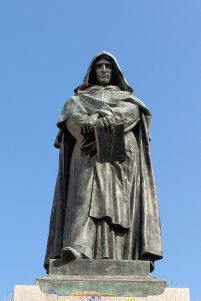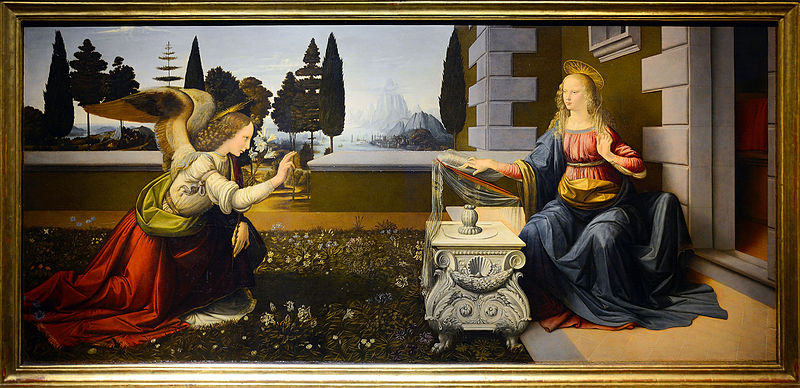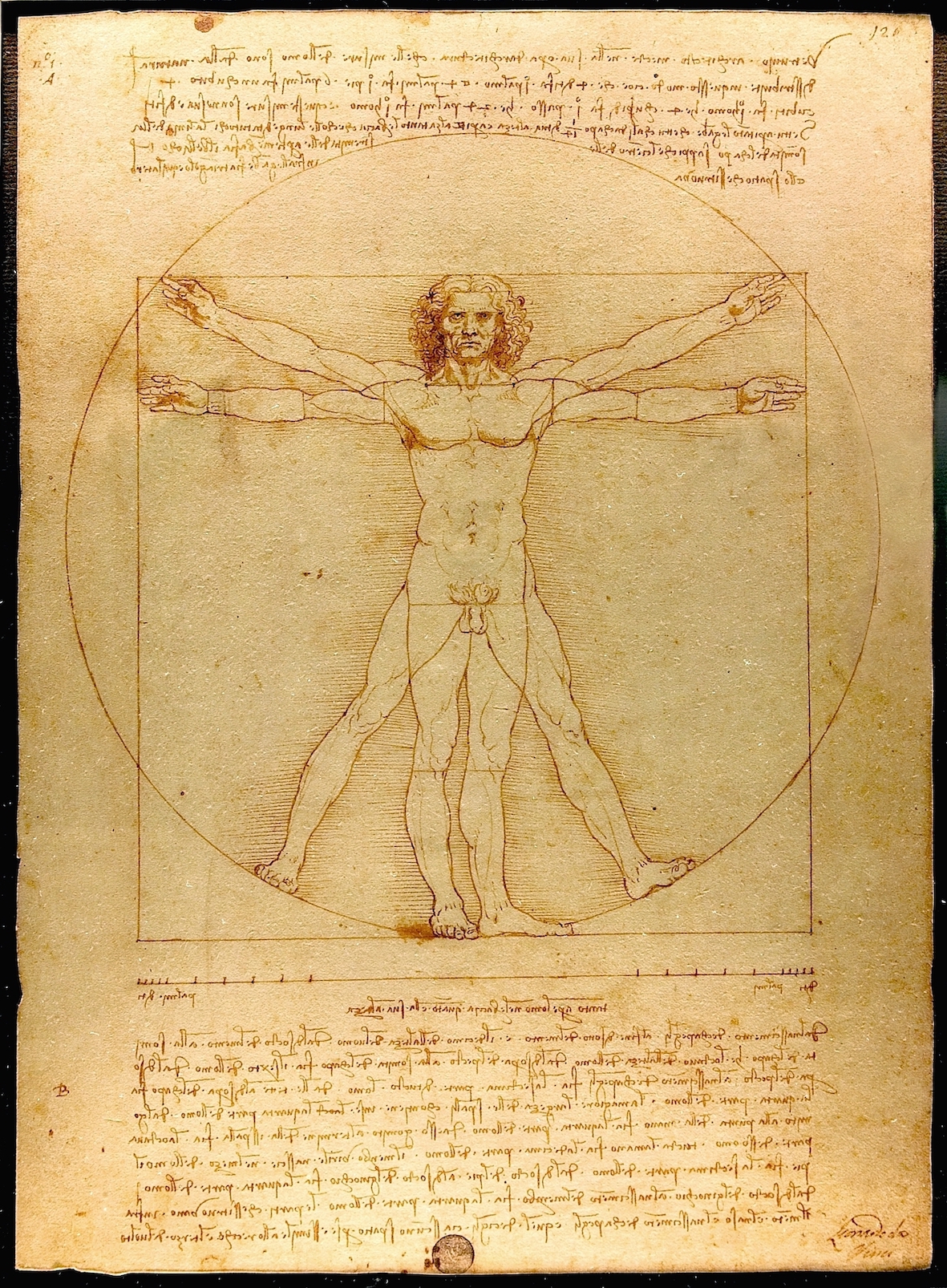Symbolic Imagination and Magical Memory in the Philosophy of Giordano Bruno
Article By Julian Scott
 Imagination is the faculty that allows us to form or see images in our minds. Using elements from the physical world, imagination allows us to transcend it and build ‘castles in the air’. But there is more to imagination than mere fantasy. It also allows us to perceive images which are the reflections of ideas. These are the symbols as containers of ideas.
Imagination is the faculty that allows us to form or see images in our minds. Using elements from the physical world, imagination allows us to transcend it and build ‘castles in the air’. But there is more to imagination than mere fantasy. It also allows us to perceive images which are the reflections of ideas. These are the symbols as containers of ideas.
In the sixteenth century, a philosopher called Giordano Bruno wrote a book entitled On the Shadows of Ideas. Like many Renaissance philosophers, he was inspired by Plato’s concept of ideas as archetypes. He was also inspired by a verse from King Solomon’s Song of Songs, which contains the image of a woman who is happy to sit in the shadow of her beloved. Bruno, who was fond of mystical interpretations of texts, said that the beloved represents the good and the true, while the woman represents the philosopher. The philosopher cannot see truth directly but merely to sit in the shadow of its light can induce a state of delight.
Bruno explains that there are two levels of shadows: the first level is that of the shadows (or reflections) of ideas, while the second, lower level, is that of the shadows of the shadows. The shadows of the ideas are to be found in what he calls the ‘celestial’ world, the world of Sun, Moon, planets and zodiacal signs, because these are the symbols of ideas: the sun represents the spirit, the moon the psyche, Jupiter represents rulership, Venus love and Mars war. Each of the zodiacal signs also represents an idea. Here we see the richness of symbolic thought, because each of these symbols does not only represent a single rational concept, but an ineffable idea which can be translated into many different forms.
Let us take the Moon as an example: as an image it is associated with imagination, poetry, dreams, witchcraft and madness, and then again with cycles of nature, the feminine, the sea, tides, plants and healing, and many other things besides. We cannot define what this symbol represents in a single word or phrase, but we can intuitively understand it. The symbol is not irrational (because there is a logic of association), but ‘para-rational’, in other words, it transcends reason and enables us to understand ideas in a holistic way. Images operate by association and this is their great strength.
Below the celestial world is what Bruno calls the ‘elemental’ world, which refers to the world of the four elements (Earth, Water, Air and Fire), in other words, the world of Nature on Earth. In this world are the ‘shadows of the shadows’ of the ideas. Bruno explains that if we want to understand the ideas themselves, we will get hopelessly lost if we try to do this by looking at the shadows of the shadows, firstly because they are almost infinite in number, and therefore hugely confusing; and secondly because, being shadows of shadows, they are more distorted than the direct shadows. Therefore, to approach the ideas themselves, we should go to what he calls the ‘star-images’ in the celestial world.
On this theoretical basis, Bruno developed a memory system, which was not simply a system of practical mnemonics, but above all a way of practising ‘reminiscence’ – Plato’s term for the ability to recall the innate knowledge of the Soul.
Memory systems were common in the Renaissance, which had inherited the idea from the classical world. The classical system is known as the ‘Palace of Memory’, where objects are placed in rooms of a house and the speakerwalks through these rooms in his imagination using the objects as memory aids.
In the Middle Ages, Raymond Lull developed a more mystical type of memory system, based on divine attributes, which was also designed to be a system for unifying all known knowledge. The illustrations to Lull’s system also featured ladders showing angels ascending and descending, as if to show that knowledge can be exchanged between the mental, celestial and elemental worlds.
According to Frances Yates, in her book The Art of Memory, “Bruno’s aim is to combine the classical art of memory with Lullism… His aim is to reach the One through the All.”
Like Lull, Bruno developed a system of concentric wheels that were designed to be rotated, giving a large number of combinations (some scholars have referred to it as a primitive computer). They include vowels, letters (in Latin, Greek and Hebrew) and images – of celestial bodies, animals, plants and minerals, amongst others. At the hub of the wheel is a sun, the emblem of Bruno’s inner striving to arrive at the One Light. The unity of the All in the One is, as Bruno says, “a most solid foundation for the truths and secrets of Nature.”
Bruno himself had a prodigious memory and presented his memory system to King Henry III of France, who was so impressed that he granted him a post as a lecturer in the Royal College. Bruno’s book On the Shadows of Ideas is dedicated to the King.
What are these ‘shadows of ideas’? To take just one example, one of the seven images of the Moon is described as follows: A horned woman riding a dolphin; in her right hand a chameleon; in her left a lily. The horns represent the extremities of the lunar crescent; dolphins (in Greek mythology) are associated with water (emotions, the return to the formless origins) as well as being seen as guides of souls to the afterlife and saviours of mortals (in the manner of the Greco-Roman Isis). The chameleon, by its well-known ability to change colour, represents the constantly changing nature of the moon, while the lily is a symbol of purity, associated with the Virgin Mary. Thus, the Moon becomes the expression of a ‘synthetic’ (in the sense of ‘synthesis’) idea, as explained earlier.
In what way do these images help us to ascend the mystical ladder towards the Ideas themselves, beyond the stars? By reflecting upon them and imprinting them on our mind-memories, combining them with each other, they could lead the student to a deep and intuitive understanding of the principles of life. With the understanding of these principles (which are the Ideas), the student could then apply them to the Elemental world of Nature and understand everything that exists. This memory symbolism can be seen as a system for contemplation, like the Tibetan mandalas or the Tarot cards, which are also used to achieve an intuitive understanding of reality.
The view of Renaissance magic was that everything is connected in a system of correspondences (from the Hermetic maxim As above, so below). By understanding one part of an interconnected system (i.e. any of these shadows, or a combination of them by rotating the wheels) one can understand the whole, the one idea behind the whole. Bruno’s whole philosophy can be summed up in the phrase ‘Unity in plurality’ and his ultimate aim was always to seek the One behind the many.
True philosophy is a harmonization of mythos with logos, subjective and objective, intuitive and rational, because these two factors represent the two sides of reality.
Image Credits: By Berthold Werner | Wikimedia Commons | CC BY-SA 3.0
The entity posting this article assumes the responsibility that images used in this article have the requisite permissionsImage References
By Berthold Werner | Wikimedia Commons | CC BY-SA 3.0
Permissions required for the publishing of this article have been obtained
Article References
Yates, F.: The Art of Memory Yates, F.: Theatre of the World Yates, F.: Giordano Bruno and the Hermetic Tradition Boulting, W.: Giordano Bruno: his life, thought and martyrdom




Giordano Bruno’s ideas are truly fascinating and have had a significant impact on the development of philosophy.